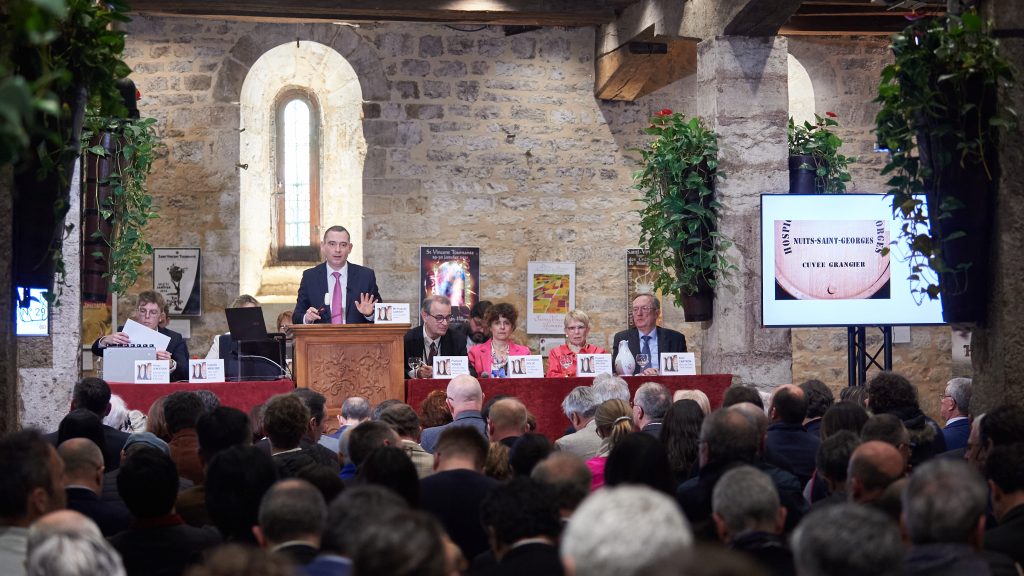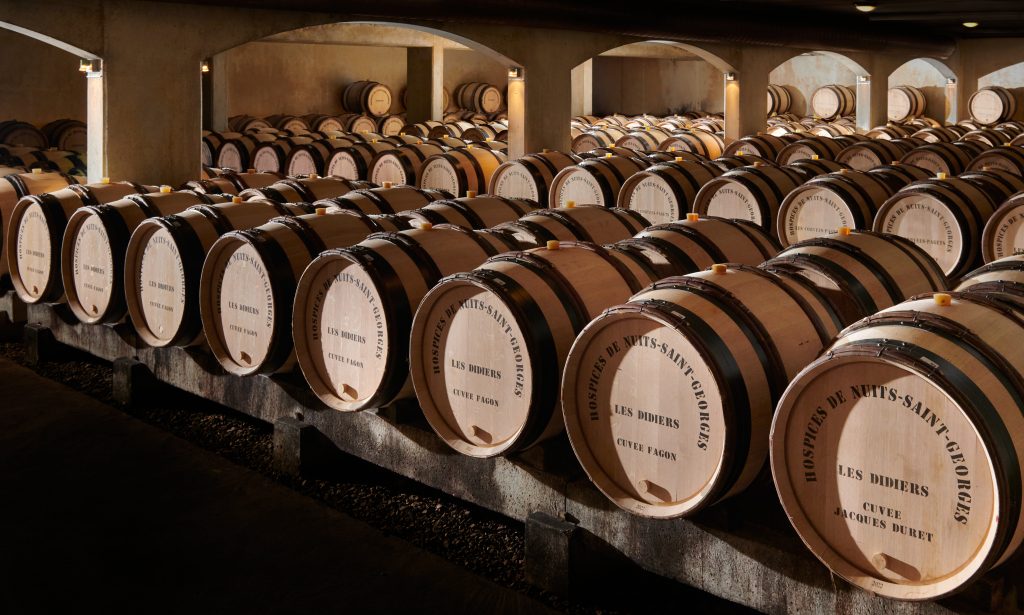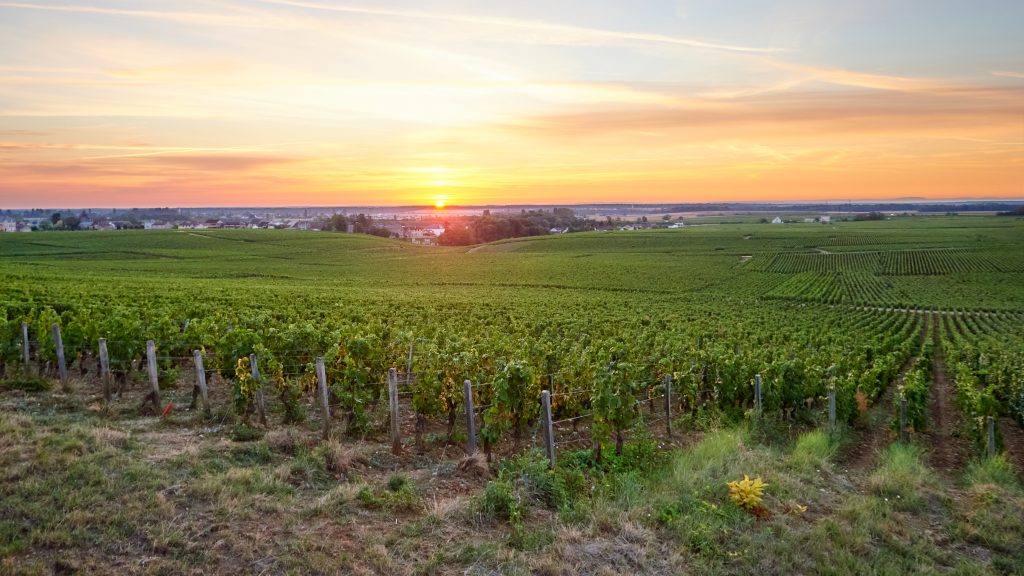This website uses cookies so that we can provide you with the best user experience possible. Cookie information is stored in your browser and performs functions such as recognising you when you return to our website and helping our team to understand which sections of the website you find most interesting and useful.
Hospices de Nuits a barometer of ‘welcome’ cooling for high-end Burgundy prices
The weekend’s Hospices de Nuits wine auction at Château du Clos de Vougeot was primarily a means of raising money for worthy causes – but it also served as a barometer of current trends for high-end Burgundy. And there are signs of prices beginning to cool after a few years of red-hot increases.

Although the Hospices de Nuits is by some distance the smaller sibling of the Hospices de Beaune auction held in the autumn, the organisation that underpins it is considerably older: the Hospices de Nuits was founded as a lazaretto or home for lepers in 1270, more than 170 years before the Hospices de Beaune was established. Both organisations have since evolved to provide healthcare for local people, and have built up their respective wine estates via vineyard donations.
In terms of wine auctions, however, the Hospices de Nuits is a century younger, with Sunday’s sale only the 62nd. Prior to that, wines from the donated vineyards that make up the Hospices de Nuits estate were sold direct to négociants.
That estate is also much smaller than that of the Hospices de Beaune: more than 12 hectares of vineyard, most of it in Nuits-St-Georges, with a small holding in Gevrey-Chambertin; village wines and nine premiers crus, including the monopole of Les Didiers and just under 1ha of vines in Les Saint-Georges, currently being put forward for promotion to grand cru status.
Vineyard donations are rare, and take time to come to fruition. Just before the auction, a parcel in Nuits-St-Georges was offered to the Hospices, but it could be two or three years before any deal is completed. The organisation has to be sure that everyone is happy to sell – not easy when ownership is often split between multiple family members – and that the motivation is sound, and not driven by fiscal reasons or a desire to exploit the prestige of an association with the Hospices.
The inflection point for the Hospices de Nuits came three years ago, when auctioneer Hugues Cortot and wine expert Aymeric de Clouet took charge, ushering in an era of live internet streaming, auctioning each barrel or pièce as a lot, and the creation of special cuvées to attract more buyers.
The sale is now a source of considerable local pride. “For me it’s a very important event,” says Laurent Delaunay of négociant Edouard Delaunay. “I am from Nuits-St-Georges, and my grandfather started buying some [Hospices de Nuits] wines in 1937. In the 1950s, he even purchased the whole output of the estate.”
When Laurent Delaunay bought back the family business in 2017 (it had been sold to Boisset in 1993), the Hospices de Nuits wasn’t in great shape. “Nobody was interested because it was much smaller, it was hidden and the organisation was not as professional as the Hospices de Beaune,” he recalls. “Some of the cuvées were not even sold.

“But now we have a beautiful event in our home town with some fantastic wines. The Hospices is one of the main and largest producers of Nuits-St-Georges with a monopole in Les Didiers, and we have an auction at Château du Clos de Vougeot. We see now that there is more and more interest – it’s done in a much more professional way, but it’s a good thing that it’s still slightly more local and genuine.”
The profile is higher, and many believe the wines made by Hospices de Nuits technical manager Jean-Luc Moron are better too, reaping the benefits of less intervention and a new cuverie opened in 2002. “I have been buying wines from the Hospices since 2004,” says Thibault Liger-Belair. “I saw a very big evolution in terms of finesse and freshness. The wine we taste now is quite rich and very easy-drinking, and the potential is there for the wine to age for a long, long time.”
Quality was matched by quantity in the 2022 vintage, which Moron describes as “the most generous, quality vintage of my career”, marrying richness with complexity, elegance and balance. Unusually, all parcels matured at almost the same time, and fermentations were straightforward. Sometimes the wines are not finished by December; not so this year.
Some hail in the southern part of the appellation had no real impact, and the hot, dry summer conditions were mitigated by plenty of rain at the end of June, and water reserves built up early in the year. Picking began on 31 August.
For Moron, it’s a year where terroir differences are plain to see and, while the quality of Les Saint-Georges shines through, other less-heralded names have over-achieved: not only premier cru wines including Les Murgers, Les Boudots, Les Terres Blanches and Les Rues de Chaux, but also village wines such as Les Lavières.
The auction results were broadly positive: total receipts up 45% on 2022 to €3,603,000; the charity pièce – a blend of the nine Nuits-St-Georges premiers crus – raising a record €64,580 for Les Blouses Roses, an organisation that helps vulnerable people in hospitals and retirement homes throughout France.

Meanwhile, the other one-off cask, Cuvée Hugues Perdrizet, drawn from some of the oldest vines in Les Saint-Georges and named after the Hospices’ first vineyard donor, was bought by merchant Albert Bichot for €40,000.
Other noteworthy lots included a cask of Les Saint-Georges Cuvée Georges Faiveley, acquired by Domaine Faiveley for a record €55,000, up from €52,000 last year, and the aggregate €99,000 paid for the only three barrels of white wine, sourced from premier cru Les Terres Blanches.
Impressive numbers, but the average price paid per pièce this year was €22,518, down 1.27% on 2022. Previously, average barrel prices had risen by 72% between 2020 and 2022, from €13,036 to €22,482, hailed as a “spectacular dynamic” by the organisers.
The slight decline is at least partially explained by the more abundant 2022 harvest – there were 160 barrels plus the charity pièce available this year, versus 109 in 2022 – but the trend is in line with what many see as a softening in the market for high-end Burgundy, already described in a recent report by fine wine trading platform Liv-ex.
“My analysis is that some really overrated properties – on the price, not the quality – started to plummet at the beginning of November,” says Aymeric de Clouet. “I really saw that. But other domaines that have been more reasonable, and that are expensive but not overwhelmingly expensive, have not been so affected.”
A cooling of the market would be welcomed by many – including producers. “We are a little bit sad about the elevation of the price,” says Thibault Liger-Belair. “We always keep the idea in Burgundy that our wines have to be drunk and not used as speculation.”
Laurent Delaunay agrees. “We were almost hoping that the prices would go down,” he says, before cautioning that any decline has to be viewed in the context of there being very little wine available for sale in the first place, thanks to the short harvest in 2021.
Delaunay is more concerned about the impact on Burgundy’s lower end – the regional wines that make up the majority of volumes at more attainable prices. Between 2020 and 2021, bulk prices for Chardonnay and Pinot Noir doubled; after the much larger 2022 harvest, they’ve dropped by only 20%, while top village wines, plus premiers and grands crus, have continued to rise.
“This is more of a problem for the entry-level wines,” Delaunay argues. “We are losing market share and listings with chains, hotels, house wines. But the good thing is that, compared with other similar wine-producing regions in the world, Burgundy has a very broad range of appellations – from £10 regional wines up to top grands crus that are out of reach, including for me.”
Here, he believes, the combined benefits of more consistent ripening (because of climate change) and improved winemaking have boosted quality across the board. “For me, the wines have never been as good as now,” Delaunay says. “If you are not able to afford a grand cru, you can find a lovely premier cru for the price you had for a grand cru 10 years ago – and the quality is probably even better.”

